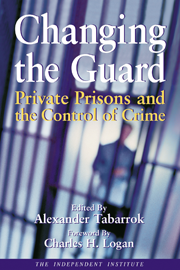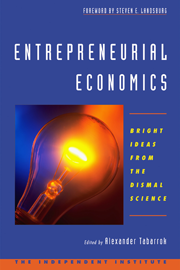This is our national identity crisis in a nutshell: Do we want government spending half its money on redistribution and military, or re-dedicating itself to science, infrastructure, and health research?
We like to think of ourselves as an innovation nation, but our government is a warfare/welfare state. To build an economy for the 21st century we need to increase the rate of innovation and to do that we need to put innovation at the center of our national vision.
Innovation, however, is not a priority of our massive federal government. Nearly two-thirds of the U.S. federal budget, $2.2 trillion annually, is spent on the four biggest warfare and welfare programs, Medicaid, Medicare, Defense and Social Security. In contrast, the National Institutes of Health, which funds medical research, spends $31 billion annually, and the National Science Foundation spends just $7 billion.
The federal government does spend some money on innovation, but mostly for innovation in warfare. The Department of Defense, for example, spends $78 billion on R&D. Good for the DoD, at least they are thinking about the future. But most defense R&D is for weapons research that is unlikely to generate significant spillovers to other areas of the economy. The basic and applied non-weapons research that has the best chance of creating beneficial spillovers is a small minority of defense R&D. DARPA, the Defense Advanced Research Projects Agency, for example, helped to develop the Internet but DARPA’s budget is only $3 billion. Even when we lump all federal R&D spending together regardless of quality it amounts to just $150 billion, a mere 4 percent of the budget.
Putting innovation at the center of our national vision is not simply about spending more money. An innovation nation would think about all problems differently. The long debate over the Patient Protection and Affordable Care Act (aka: Obamacare) for example, was almost entirely about welfare and redistribution, about dividing the pie. During this debate how much did we hear about health innovation?
From an innovation perspective, two facts about health care are of importance. First, a huge amount of health care spending is wasted. A strong consensus exists on this point from health care researchers along the political spectrum. Hundreds of billions of dollars are spent on health care today with little or nothing to show for it in terms of improved health. Second, although spending more on health care today doesn’t get you much, spending more on health care research gets you a lot. The increases in life expectancy from fewer deaths brought on by cardiovascular disease over the 1970-1990 period, for example, were worth over $30 trillion. Yes, $30 trillion. In other words, the gains from better health over the period 1970-1990 were comparable to all the gains in material wealth over the same period.
Looking at the future, if medical research could reduce cancer mortality by just 10 percent, that would be worth $5 trillion to U.S. citizens (and even more taking into account the rest of the world). The net gain would be especially large if we could reduce cancer mortality with new drugs, which are typically cheap to make once discovered. A reduction in cancer mortality of this size does not seem beyond reach. Medical research spending is far more valuable on the margin than medical care spending yet because we lack an innovation vision, we endlessly debate how to divide the pie while we overlook potentially huge improvements in human welfare.
THE RED-TAPE MENACE
Regulation is another area in which we lack an innovation vision. There are good regulations and bad regulations and lots of debate over which is which. From an innovation perspective, however, this debate misses a key point. Let’s assume that all regulations are good. The problem is that even if each regulation is good, the net effect of all the regulations combined may be bad. A single pebble in a big stream doesn’t do much, but throw enough pebbles and the stream of innovation is dammed.
Building in the United States today, for example, requires navigating a thicket of environmental, zoning and aesthetic regulations that vary not only state by state but county by county. If building a house is difficult, try building an airport. Passenger travel has more than tripled since deregulation in 1978, but in that time only one major new airport has been built: Denver’s. That airport is now the fourth busiest in the world. Indeed the top seven busiest airports are all in the United States, not so much because we are big but because without new construction we are forced to overcrowd our existing infrastructure. The result is delays and inefficiency. Meanwhile, China is building 50 to 100 new airports over the next 10 years.
Regulatory thickets are also strangling energy innovation. The U.S. Department of Energy, for example, estimates that small and environmentally friendly hydro-electric projects could generate at least 30,000 MWs of power annually. That’s equivalent to the generating capacity of about 30 nuclear power plants. Moreover, since 97% of U.S. dams are generating zero power today, these projects would not require building any new dams. So what’s the problem? The problem is that building even a small hydro-electric project requires the approval of numerous agencies, including the Federal Energy Regulatory Commission, the U.S. Fish and Wildlife Service, the Army Corps of Engineers, State Environmental Departments and State Historic Preservation Departments. It’s simply too expensive, time-consuming and risky to build these projects when any of these agencies could veto it at any time. The net result is that we generate more electricity than necessary by leveling mountains, burning coal, and filling our air with dangerous particulates and climate-changing CO2.
BUILDING THE NEXT HOOVER DAM
Our ancestors were bold and industrious. They built a significant portion of our energy and road infrastructure more than half a century ago. It would be almost impossible to build that system today. Could we build the Hoover Dam today? We have the technology. We seem to lack the will. Unfortunately, we cannot rely on the infrastructure of our past to travel to our future. Airports, an electricity smart grid that doesn’t throw millions into the dark every few years, and ubiquitous Wi-Fi are among the important infrastructures of the 21st century, and they are caught in the regulatory thicket.
Our economy is stagnant and for the first time in a long time, and the national mood is deeply pessimistic. To restore our economy and our spirits we need to become an innovation nation. An innovative nation would improve the prospects for economic growth but could do much more. The warfare-welfare state divides the pie and also divides Americans. Americans, however, are an innovative, forward-thinking people and the prospects are good for uniting them on a pro-growth, pro-innovation agenda.
This essay is drawn from Launching the Innovation Renaissance Alex Tabarrok’s new book, published by TED books.












